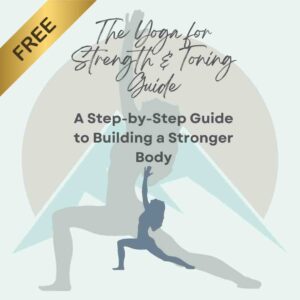If you’re over 40 and pondering whether it’s too late to start yoga, the answer is a resounding no. In fact, many people begin their yoga practice later in life and find it profoundly transformative. Yoga, a holistic practice that combines physical postures, breath control, and meditation, offers numerous benefits regardless of when you start. Whether you’re looking to improve flexibility, increase strength, reduce stress, or find a sense of balance in your life, yoga can be a powerful tool. This article will debunk common myths, highlight the benefits of yoga after 40, and provide practical advice on getting started.
Debunking Myths About Starting Yoga After 40
When considering a new activity like yoga, especially later in life, it’s normal to have doubts and concerns. Many people wonder, “Is it too late to start yoga after 40?” Let’s take a look at some of the most common myths surrounding this question and why they are simply not true.
Myth 1: Yoga is Only for the Young and Flexible
One of the most pervasive myths is that yoga is only for the young or for those who are already flexible. This could not be further from the truth. Yoga is an adaptable practice that can be modified to suit every individual, regardless of age or fitness level. Whether you’re a seasoned athlete or someone who’s never set foot in a gym, yoga meets you where you are. Flexibility is not a prerequisite; it’s a benefit that yoga can help you develop over time. Many people who begin yoga later in life discover that their flexibility gradually improves with regular practice.
Myth 2: Starting Yoga After 40 Is Risky
Another misconception is that yoga might be risky or too challenging for those over 40. The reality is that yoga, when practiced mindfully, can be one of the safest and most beneficial forms of exercise. It strengthens muscles, supports joint health, and improves balance—all crucial factors in preventing injury as we age. Many yoga poses can be modified with props or supported variations, making them accessible and safe. Plus, yoga encourages body awareness, which helps practitioners learn to listen to their bodies and avoid overexertion.
Myth 3: It’s Too Late to See Real Benefits
Some people believe that it’s too late to see any real benefits from starting yoga after 40. However, research and countless personal stories show that significant improvements can occur at any age. Yoga can enhance physical fitness, mental well-being, and overall quality of life. There are countless examples of people who began their yoga journey later in life and have experienced transformative effects on their health and happiness.
Understanding the Benefits of Yoga for Those Over 40
Now that we’ve debunked the myths, let’s dive into the benefits of starting yoga after 40. Yoga is not just a physical workout; it’s a comprehensive mind-body practice that can help improve various aspects of your well-being.
1. Improved Flexibility and Mobility
Flexibility often decreases with age due to inactivity, muscle tightness, or joint stiffness. Yoga helps maintain or even regain flexibility by gently stretching muscles, tendons, and ligaments. Regular practice can improve range of motion and make everyday movements easier. You don’t have to touch your toes on the first day, but over time, you may be surprised at how much your flexibility increases.
2. Enhanced Strength and Balance
Building strength becomes increasingly important as we age to support our bones and joints. Yoga uses body weight to build muscle, which can protect against age-related muscle loss. Additionally, yoga poses often require balance, which is crucial for preventing falls and maintaining independence in later years. Whether you’re holding a Warrior pose or balancing in Tree pose, yoga strengthens stabilizing muscles, enhances coordination, and boosts confidence in your body’s abilities.
3. Better Posture and Reduced Risk of Injury
Poor posture is a common issue for people of all ages, particularly for those who spend much of their day sitting at a desk or looking at screens. Yoga can help correct posture by aligning the spine and strengthening the muscles that support it. With regular practice, you’ll notice better posture, reduced back pain, and a lowered risk of injury from everyday activities.
4. Mental Wellness and Stress Management
One of the most powerful benefits of yoga is its impact on mental well-being. Life after 40 often brings unique challenges, from career pressures to family responsibilities. Yoga offers tools for managing stress through breath control, meditation, and mindful movement. It encourages a focus on the present moment, which can help alleviate anxiety and promote a sense of inner peace. Many people find that yoga becomes a valuable practice for navigating the ups and downs of life.
Getting Started: Choosing the Right Yoga Style and Instructor
So, is it too late to start yoga after 40? Absolutely not. The key is to begin with the right approach. When starting yoga later in life, selecting the appropriate style and instructor can make all the difference in your experience.
Choosing the Right Yoga Style
Not all yoga styles are created equal, and some may be more suitable for beginners over 40. Here are a few styles to consider:
- Hatha Yoga: Known for its slower pace and focus on foundational poses, Hatha Yoga is an excellent choice for beginners. It provides a gentle introduction to the basics of yoga.
- Iyengar Yoga: This style emphasizes alignment and precision, often using props like blocks and straps to help practitioners achieve the correct posture. It’s ideal for those who may have mobility issues or need extra support.
- Restorative Yoga: As the name suggests, Restorative Yoga focuses on relaxation and recovery. Poses are held for longer periods, often supported by props, making it perfect for stress relief and gentle stretching.
Finding the Right Instructor
A qualified instructor who understands the unique needs of beginners over 40 is crucial. Look for teachers with experience working with mature students or those who offer classes specifically tailored to older adults. An instructor who is patient, encouraging, and knowledgeable will make your yoga journey comfortable and rewarding.
Creating a Sustainable Yoga Routine
Consistency is key when starting any new activity, and yoga is no different. To build a sustainable yoga practice, it’s important to start small and gradually increase your commitment.
Start Small
Begin with shorter sessions, around 20-30 minutes, a few times a week. This manageable duration makes it easier to fit yoga into your daily routine without feeling overwhelmed. As you grow more comfortable, you can gradually extend the time and frequency of your practice.
Integrate Yoga into Daily Life
Yoga doesn’t have to be confined to a mat or a studio. Integrate it into your daily routine with small, mindful practices. Spend a few minutes each morning doing gentle stretches, practice deep breathing during stressful moments, or end your day with a few minutes of meditation. These small practices can have a significant impact on your overall well-being.
Focus on Consistency, Not Perfection
The goal of yoga is not to achieve a perfect pose but to connect with your body and mind. It’s essential to focus on consistency and gradual progress rather than perfection. Each time you step onto your mat, you’re taking a step towards better health and self-awareness.
Overcoming Common Challenges and Misconceptions
Even with the best intentions, it’s common to face challenges when starting yoga, especially if you’re asking, “Is it too late to start yoga after 40?” Here’s how to overcome some common obstacles:
Self-Doubt and Societal Misconceptions
Many people feel self-conscious about starting yoga later in life, worrying that they won’t “fit in” or that they won’t be able to keep up with younger, more experienced practitioners. Remember, yoga is for everybody, regardless of age, shape, or ability. Don’t let stereotypes or misconceptions deter you from experiencing its benefits.
Listening to Your Body
Your body may feel different at 40 than it did at 20, and that’s okay. Yoga encourages self-awareness, so listen to your body and respect its limits. It’s perfectly fine to modify poses, use props, or take breaks when needed. Your practice should be a nurturing experience, not a punishing one.
Avoiding Comparisons
Every yogi has a unique journey, and it’s essential to remember that your beginning may look different from someone else’s. Avoid comparing yourself to others, whether in a class or on social media. Celebrate your progress, no matter how small it may seem.
Your Yoga Journey Awaits
So, is it too late to start yoga after 40? Absolutely not. Yoga is a lifelong practice that evolves with you, adapting to your needs and abilities. Starting yoga at any age is a powerful step toward a healthier, more balanced life.
Embrace the journey with an open mind and heart. Remember that yoga is a personal practice that grows and evolves with you. It’s never too late to start, and being over 40 should not be a barrier. You’re never too old, too stiff, or too out of shape to experience the transformative benefits of yoga.
In conclusion, the answer to “Is it too late to start yoga after 40?” is a definitive no. The myths surrounding yoga and age are just that—myths. Starting yoga after 40 offers countless benefits, from improved flexibility and strength to better mental health and stress management. You can have a fulfilling yoga journey by choosing the right style and instructor, creating a sustainable routine, and overcoming common challenges.
Don’t let age deter you from embracing the practice of yoga. It’s never too late to start yoga after 40, and the rewards are waiting. Whether you’re looking to enhance physical fitness, find mental peace, or simply try something new, yoga can provide a path to a more vibrant and balanced life. So roll out your mat, take a deep breath, and get ready for your new adventure. Your yoga journey awaits!
Additional Resources:
[FREE] Yoga for Strength & Toning download https://www.heathermonthie.com/yogaforstrength




